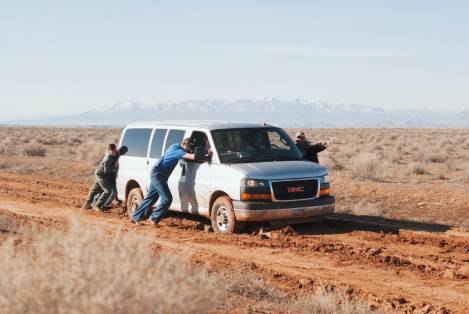Navigating Dangerous Roads: 9 Tips for Avoiding Car Crashes and Hazards

Car crashes are painful, scary, costly, and traumatizing. They are bound to happen to any road user despite the experience they have driving. Dangerous roads make it even more catastrophic to drive on. However, these car crashes and hazards can be reduced if all road users drive responsibly and observe traffic rules. This post explores ways to avoid car crashes and hazards when driving on dangerous roads.
Slow Down
One of the most important factors when traveling on dangerous roads is slowing down. They are faced with hazardous situations such as veering off the road, especially when the car is speeding. Be sure to identify potential hazards, as some roads lack side rails that may potentially block you from falling off the road. Roads are built for a certain speed limit, where going over the limit puts you and other drivers at risk. Causing a car accident based on overspeeding can be costly for you. You can only be too careful on the road but be involved in a car accident by a negligent driver. Another driver’s negligence on the road can cost you, but all you need is to seek help from a car accident claim law firm and have a claim that will pay for your damages and suffering. An attorney will help you follow up on your claim because you may not be able to afford the hustle and bustle of court proceedings while you are still recovering.
Overspeeding is catastrophic. To avoid overspending, ensure you plan and you have plenty of time to reach your destination. Be patient while driving on a dangerous road because your vehicle can easily veer off the road. You must ensure you take note of the speed limit designated for some roads. do not only slow down to avoid speeding tickets and lawsuits but avoid overspeeding to save your life and that of other road users. Additionally, a car crash’s impact on a low-speeding vehicle is much lower than a speeding car whose aftermaths are fatal.
Avoid Distracted Driving
Distracted driving on roads can be fatal for you and other road users. Driving especially on a dangerous road requires maximum focus from you such that you can notice situations that may lead to a car crash. Distracted driving involves using your phone while driving or munching on your snacks. Distracted driving is not only limited to the two mentioned reasons but it involves driving while concentrating on other activities. Distractions do not have to be physical to cause an accident with the driver. Cognitive distractions are equally fatal while driving. Fatigue and stress can distract you from the road. Other distractions include visual distractions. Visual distractions take your eyes off the road while looking at your navigation system, or changing a song just to mention a few. Be sure to be extremely focused while driving on a dangerous road because, with the slightest mistake, you can have your car overturning down the hill.
Physical distraction can be avoided by pulling your car off the road and attending to your needs such as making a phone call, texting, or eating that snack if you are hungry. Notably, you can keep your phone far away e.g. on the backseat to avoid the temptation of picking up that call or replying to that text. To avoid cognitive distractions, ensure you take some rest in a nearby town because dangerous roads can be fatal to park on the roadside and sleep. You can as well start off your journey after you get enough sleep or after you distress. Visual distractions can be avoided by keeping your eyes on the road. Listening to music is a luxury that you can postpone for a while to ensure you concentrate on the road.
Check Your Blind Spots
Rear mirrors, wing mirrors, and windows give drivers sight around the vehicle. However, sometimes the driver cannot see the space around the vehicle because of the windows and mirror shapes and sizes making it difficult to see without turning your head. You must understand that blind spots vary from vehicle to vehicle. Be sure to check your blind spot before merging onto the highway because you can be hit by a speeding vehicle. Highways are allowed higher speed limits compared to other roads, you may want to avoid entering a highway without checking your blind spot. Failure to check your blind spots can attract penalties if you happen to cause an accident. Causing a car accident comes with hefty penalties. to be safe, always ensure you are aware of your surroundings. It is critical to understand that you can be in another driver’s blind spot, so you need to be careful on the road.
Technology evolution has introduced tech tools that can help you check out your blind spots. They include sensors, blind spot mirrors, and cameras. These tools warn you when you are approaching or being approached by vehicles that seem far enough, but they are pretty close. You do not have to keep your eyes off the road for you to check out the blind spots. You can avoid car crashes related to blind spots by adjusting your car seating position. An appropriate seating position makes it possible for the driver to have a better sight of the car’s surroundings. A road that has large trucks and vehicles is potentially dangerous roads because they have larger blind spots therefore you must approach with caution.
Avoid Driving Under the Alcohol Influence
Drunk driving causes fatal road accidents or attracts serious lawsuits and hefty penalties. Driving under the influence compromises your responsiveness and cognitive ability. It would be best if you find someone else to drive you home or take a taxi instead of endangering your life and other road users. Crashing on someone else’s car can cost you your insurance money when a claim is made against you to pay for damages. Drunk driving is also dangerous, especially on busy roads. The guilt that may follow after a road accident may be consuming, mainly when you kill someone.
If you must drink and drive, ensure you eat a lot of food because an empty stomach increases your chances of rapid intoxication. However, the best option is to spend the night until you sober up and drive. To avoid drunk driving, avoid getting into a car with a drunk driver. You will be putting your life at risk. A sober mind can help stop the risks of accidents that may follow under the influence. As a sober person, you must prevent the drunk driver from driving.
Use Turn Signals
Turn signals are critical for safe driving on dangerous roads. They help drivers to communicate with other drivers about their intentions when changing lanes. Making turns without signaling other drivers can result in fatal accidents. Before you enter a road, be sure to check if your signals are functioning. Turning signals go hand in hand with proper changing of lanes. You should be close to the lane you want to switch to. It is highly recommended that you move close to the lanes you want to switch to indicate to other drivers while allowing them to keep some distance to help you switch.
Adjust To Weather Conditions
Harsh weather conditions and poor road conditions are a dangerous combination when driving. You must enroll in a defensive driving program. Defensive driving teaches drivers to anticipate road hazards and act fast toward avoiding them. Adapting to surroundings such as poor road conditions and changed weather conditions assists drivers to minimize the risks that come with such conditions. To drive in bad weather you must leave room in front, like doubling the space between you and other drivers especially when driving in snow, rain, or sleet. Poor weather conditions make it challenging to have sight of oncoming vehicles. Ensure that you turn on low-beam headlights to see through fog whether it is during the night or daytime. Low-beam headlights help other drivers to see you as you approach them or when they approach you. In fog, you must maintain a bigger distance when following other vehicles to avoid crashes. Following bad weather, endure you stay on the far end of your lane to avoid going close to the central line and give space to oncoming traffic.
Radios report bad weather conditions therefore you may choose to follow up on roads to avoid or approach with caution. Prevention is better than cure. If your journey is not urgent you can avoid travelling in poor weather. It is safer to wait until the harshness of the weather reduces or clears to continue with your journey. Stormy and rainy weather conditions for instance are dangerous because flash floods can occur at any moment resulting in casualties that could have been avoided. If you have to rest, ensure you do so off the road to avoid another vehicle crashing on you unknowingly due to poor vision.
Know Your Routes
Driving on dangerous roads requires the driver to know the routes they are navigating. Driving on new routes can be hectic when you do not understand its turns, stretches, sharp corners, etc. The nature of the road you are traveling on could be bumpy, lacking side rails, or long stretches that prevent you from seeing oncoming vehicles and especially on a busy road. Check whether the route has drop-offs. Roads on the mountains with curvy trails along cliffs can be extremely scary. Steep drop-offs increase danger levels for drivers who do not know the routes. You can go over the edge if something goes off on the road. Drop-offs are increasingly fatal when the roads lack guardrails and barriers. Potholes are equally dangerous and they can cause car crashes when vehicles try to avoid them. Potholes are a result of increased traffic use or bad weather. Miscalculating where you should drive on and hit potholes results in wheel misalignment which can cause havoc on the road. Navigating a route you are familiar with can be helping you avoid car crashes and hazards.
Keep Distance
The distance between you and another vehicle determines the speed at which you notice and avoid a road hazard. An increased distance gives you the time to respond safely. You can determine the distance you must give the vehicle in front of you by using the three-second rule. Consider picking a marker that will help you determine the time you should reach it after the vehicle you are following passes the marker. The three-second rule works by literally counting three seconds for you to reach that marker. If you reach it earlier than the three seconds designated, consider slowing down to keep some distance. Engineers usually measure the distance through time and not space to determine how long a driver can respond to a hazard if one arises. The three seconds rule may not apply to some situations. You may want to keep an increased distance in bad weather conditions, or when following a larger vehicle such as a truck. Remember large vehicles have larger blind spots and therefore braking can cause you to ram onto the truck from behind.
Maintain Your Vehicle
A well-maintained and serviced vehicle helps you avoid car crashes. Well-serviced tires are critical when it comes to navigating dangerous roads. it would be catastrophic to drive on drop-off with the poorly maintained braking system. Additionally, you do not want your vehicle knocked off on a busy highway. The speeding on a highway is high therefore other vehicles may ram on your vehicle despite placing signal hazards.
You must navigate dangerous roads with caution. Responsible driving can minimize road accidents. You can be a careful driver but still, find yourself a victim of careless drivers. In this case, you should find an attorney who will help you claim payments for the damages and suffering. The most important factor to note is that you must learn how to drive at a reasonable speed because it can reduce the impact of a car crash. Lastly, be sure to properly maintain your car and minimize the risk of frustrations on the road. Observe the above tips and avoid car crashes, and notice hazards easily when you are navigating dangerous roads.
Updated July 24, 2023



